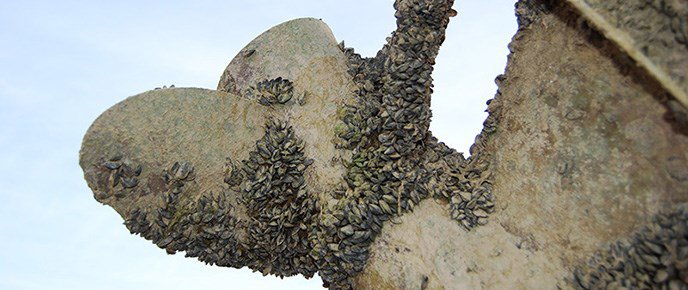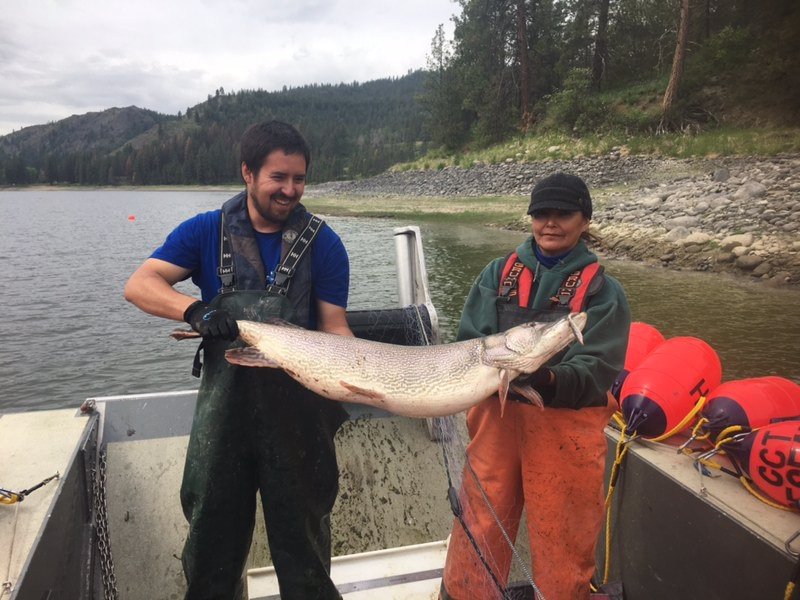Washington And Partners Use Early-detection Monitoring To Locate And Control Invasive Aquatic Species
- October 22, 2019
- John Harrison

Washington state is watching carefully for signs that invasive species like Northern Pike and zebra and quagga mussels don’t expand (pike) or take hold (mussels) in the state.
At the Council’s October meeting, Jesse Schultz of the Aquatic Invasive Species Unit at the Washington Department of Fish and Wildlife and Justin Bush, executive coordinator of the Washington Invasive Species Council, briefed the Council’s Fish and Wildlife Committee on early-detection monitoring for pike and quagga and zebra mussels. Quagga and zebra mussels are freshwater mollusks that can choke water delivery systems and submerged equipment, such as at hydropower dams, with thick mats of their tiny, calciferous shells. The mussels have not been detected in Washington yet, but they have infested waters in the Midwest and Southwest and could be transported here on trailered boats or aquatic equipment. Northern Pike have infested Lake Roosevelt, the reservoir behind Grand Coulee Dam, and an effort is under way to limit their spread downriver, where they could harm salmon steelhead, including threatened and endangered species.
“We’re trying to prevent the spread of invasive species by drawing a containment line,” Bush said. “The name of the game is prevention first. Like a lightning strike that starts a fire, you need to get to it quickly and prevent its spread. That’s what we’re doing with invasive species.”
The state is testing a new waterbody risk analysis to better prioritize lakes, ponds, and rivers across Washington for infestations by quagga and zebra mussels.
“They never have been detected in Washington, and the only way they will get to Washington is through human interaction,” Schultz said. So, Washington, like the other Northwest states, has inspection stations along highways leading into the state to inspect boats and other watercraft and decontaminate them if necessary. The Fish and Wildlife Department’s Aquatic Invasive Species Unit is responsible for early detection monitoring efforts statewide to look for invasive freshwater mussels in Washington’s waters using a variety of monitoring techniques.

Unlike mussels, Northern Pike already are present and causing problems, but so far are only confined to one area – Lake Roosevelt. Northern Pike are prolific spawners, grow quickly and will eat anything smaller than they are, including the trout and kokanee species in the lake that are prized by anglers. The state, mid-Columbia public utility districts, which own five dams on the Columbia, and the Colville and Spokane tribes are partners in the effort to control the spread of Northern Pike.
The Washington Fish and Wildlife Commission moved Northern Pike from a Level 1 invasive species to Level 3 at a September meeting, which will allow the state to declare an invasive species emergency if the pike get below Chief Joseph Dam. Once below that dam, pike would be in waters where they could prey on juvenile salmon and steelhead.
Maps have been developed that identify suitable spawning habitat for pike so that monitoring can focus there – another kind of invasive species containment line. Suitable habitat – shoreline areas with a depth of less than 15 feet and slope of less than 25 percent – behind Chief Joseph Dam total 1,584 acres. The reservoir created by Wells Dam, the next one downstream, has 5,083 acres of suitable habitat. These are areas where water testing for pike DNA could be focused in the future, Schultz said.
There have been reports of pike sighted in the reservoir behind Little Goose Dam on the lower Snake River and in Lake Entiat behind Rocky Reach Dam on the Columbia at Wenatchee, but laboratory analyses of water samples were negative. While the reported sightings turned out to be false alarms, the rapid-response turned out to be a good training exercise. “Invasive species managers need to train, just like police officers so we can be most effective in a real emergency,” Bush said. He said the state planned a multi-agency rapid response test at Lake Roosevelt this month.



